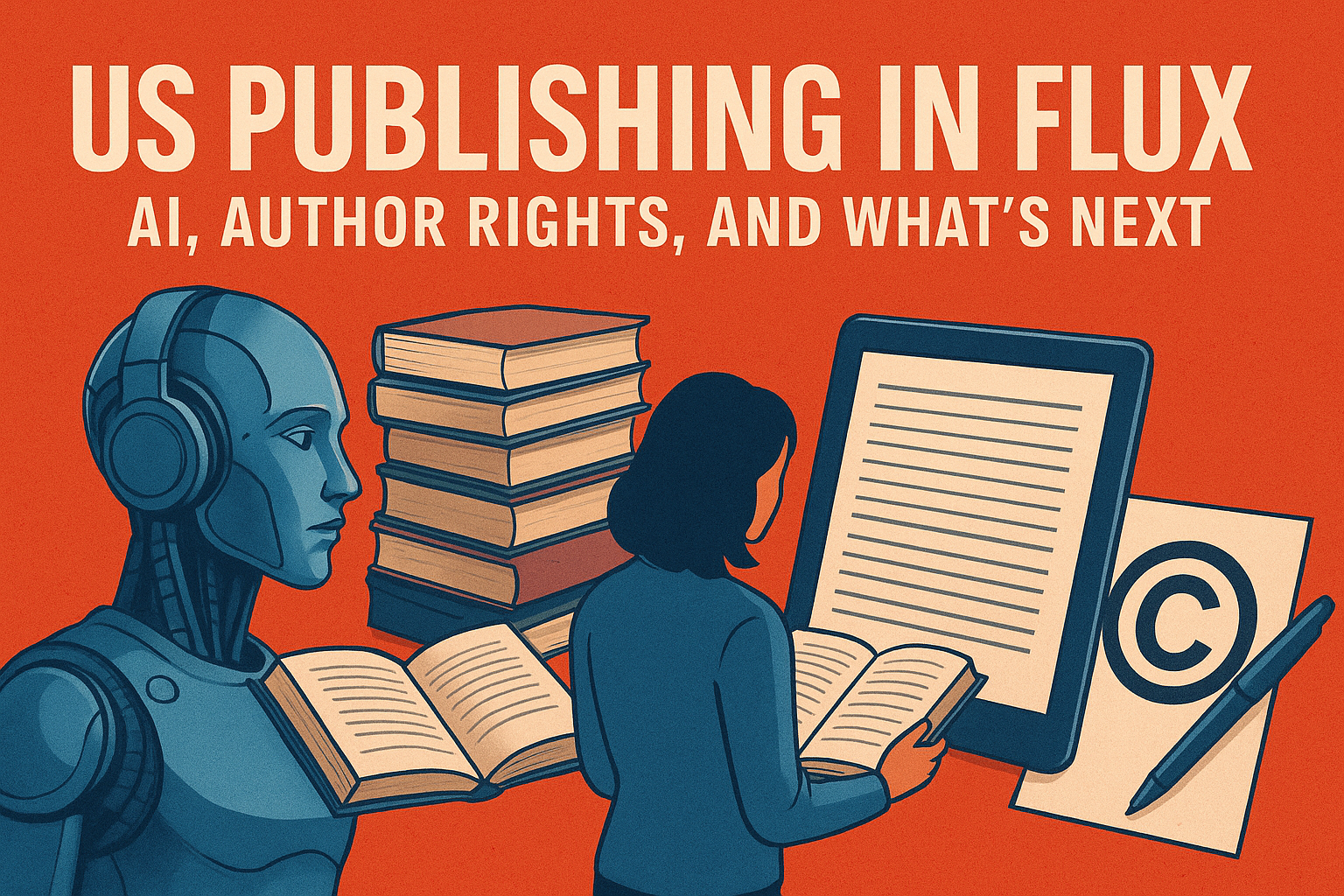From Manuscript to Marketplace: How to Publish Your Business Book

Publishing a business book is a significant milestone that can establish your authority, expand your brand, and inspire readers with your insights. However, navigating the publishing landscape — whether through traditional publishing, hybrid publishing, or self-publishing — can be challenging without a clear plan. This comprehensive roadmap guides you through the essential steps of preparing your manuscript, exploring different publishing models, and making informed decisions about your publishing journey. From crafting a compelling book proposal to executing a strategic marketing plan, this guide will equip you with the tools and knowledge to bring your business book to life and maximize its impact.
1. Preparing the Manuscript
a. Define Your Audience and Goals
· Define your book’s target audience to tailor your message effectively. Focus on entrepreneurs, executives, or industry professionals who will benefit most from your insights. Understanding their needs, challenges, and goals ensures your content resonates, positions your expertise, and delivers actionable value, making your business book a powerful tool for connection and impact.
· Define your goals for writing the book — whether it’s establishing authority in your field, building your personal or professional brand, educating readers with valuable insights, or generating revenue. Clear objectives will guide your writing, shape your marketing strategy, and ensure your business book achieves meaningful impact and aligns with your vision.
b. Research and Outline
· Thoroughly research your topic to ensure accuracy, depth, and relevance. Explore current trends, case studies, and credible sources to strengthen your book’s authority. Understanding your subject matter deeply allows you to provide fresh insights, address reader pain points, and position your business book as an essential resource in its field.
· Develop a detailed outline to organize your book’s structure and flow. Break it into chapters, each with a clear focus and actionable key takeaways. This roadmap ensures your content is cohesive, engaging, and purposeful, guiding readers seamlessly through your insights while highlighting the value they’ll gain from your business book.
c. Write and Revise
· Write your manuscript using clear, engaging, and actionable language that resonates with your audience. Avoid jargon, focus on relatable examples, and maintain a conversational tone. Aim to inform and inspire readers by presenting complex ideas simply, encouraging them to apply your insights effectively in their personal or professional lives.
· Gather feedback from trusted colleagues or beta readers to refine your manuscript. Their perspectives can highlight strengths, identify areas for improvement, and ensure your message resonates with your target audience. Constructive input helps polish your book, making it more engaging, relevant, and impactful before reaching a wider readership.
d. Professional Editing
· Enlist a developmental editor to enhance your manuscript’s structure, flow, and content. They provide expert guidance on pacing, clarity, and coherence, ensuring your ideas are effectively communicated. This collaboration refines your book’s overall narrative, aligns it with your goals, and prepares it to engage and captivate your target audience.
· After developmental editing, follow up with copyediting and proofreading to ensure clarity, consistency, and grammatical accuracy. A copyeditor refines sentence structure and style, while proofreading eliminates any lingering errors. This final stage enhances readability, ensuring your manuscript is polished, professional, and ready for publication with minimal distractions for readers.
2. Traditional Publishing
a. Research Publishers
· Identify publishers that specialize in business books, such as Penguin Random House, Wiley, or Harper Business. Research their portfolios to ensure alignment with your book’s theme and audience. Submitting to the right publisher increases your chances of success by targeting those with expertise in your specific genre and market.
· Carefully review the submission guidelines on a publisher’s website to ensure your manuscript aligns with their requirements. Pay attention to formatting, query letter specifications, and sample chapter requests. Following these guidelines accurately demonstrates professionalism and increases the likelihood of your submission being considered for publication.
b. Find a Literary Agent
· Literary agents serve as intermediaries between authors and publishers, helping to navigate the publishing industry. They pitch your manuscript, negotiate contracts, and secure the best deal. With their industry knowledge and connections, agents provide valuable support, ensuring your work reaches the right publishers and maximizes your chances of success.
· Submit a well-crafted query letter, a compelling synopsis, and sample chapters to agents who specialize in business books. Ensure your materials are tailored to each agent’s preferences, showcasing your expertise and the unique value of your manuscript. A strong submission increases your chances of securing representation and publisher interest.
c. Create a Strong Book Proposal
· Your book proposal should include an overview of your manuscript, outlining its purpose and key themes. Detail the target audience, conduct a competitive analysis, and provide a marketing plan to demonstrate your book’s potential reach. Include sample chapters to showcase your writing style, ensuring your proposal is compelling and complete.
· In your proposal, emphasize your expertise, relevant credentials, and unique insights to establish your authority. Showcase how your background and experience add credibility to the subject matter, and explain why your perspective offers something fresh or valuable to the target audience. This helps position you as an authoritative voice in your field.
d. Pitch to Publishers
· Once you secure a literary agent, they will pitch your manuscript to suitable publishers. Leveraging their industry connections, agents match your work with publishers who are a good fit for your book’s genre and audience. Their expertise in negotiation and market trends enhances the chances of securing a deal.
· If you don’t have an agent, some publishers accept unsolicited proposals. Carefully review their submission guidelines to ensure your proposal meets their specific requirements. Submitting directly can be a viable option but be prepared for a longer response time and a more competitive process without the agent’s support.
e. Negotiate Contracts
· Collaborate with your agent to carefully review key contract terms, such as advance payments, royalty rates, and intellectual property rights. Agents ensure the terms are fair and in your best interest, helping to negotiate favorable deals that align with your goals and maximize the potential of your business book.
3. Hybrid Publishing
a. Understand the Model
· Hybrid publishing blends aspects of both traditional and self-publishing. Authors typically pay for services like editing and design, while maintaining more creative control and higher royalties than traditional publishing. This model offers professional support while allowing authors to retain ownership and a more hands-on role in the publishing process.
· In hybrid publishing, authors cover certain services, such as editing and design, while retaining a larger share of royalties compared to traditional publishing. This model offers a balance of professional support and creative control, allowing authors to maintain ownership of their work while benefiting from higher financial returns.
b. Research Hybrid Publishers
· Seek reputable hybrid publishers like Scribe Media, She Writes Press, or Greenleaf Book Group, known for their professional services and successful track records. These companies offer publishing support while allowing authors more control over their work and higher royalties. Research their offerings to ensure they align with your publishing goals.
· When selecting a hybrid publisher, ensure they meet industry standards for quality and professionalism. Verify that they are transparent about costs, including fees for editing, design, and distribution. A reputable publisher will provide clear, upfront information about services and pricing, helping you make an informed decision.
c. Prepare a Submission
· Similar to traditional publishers, hybrid publishers may require a manuscript or proposal submission to assess your book’s potential. Prepare a polished proposal that outlines your manuscript, target audience, and marketing plan. Meeting submission requirements increases your chances of working with a reputable hybrid publisher that aligns with your goals.
d. Review Costs and Services
· Before committing to a hybrid publisher, thoroughly understand the pricing for services like editing, design, marketing, and distribution. Request detailed breakdowns of all costs to ensure transparency and avoid surprises. This helps you budget effectively and assess whether the publisher’s services align with your publishing and financial goals.
e. Collaborate on Publishing and Marketing
· Collaborate closely with your hybrid publisher to finalize your manuscript, ensuring it meets professional standards. Work together to develop and execute a comprehensive marketing plan, utilizing their expertise in promotion, distribution, and branding. This partnership enhances your book’s visibility and success in reaching its target audience.
4. Self-Publishing
a. Choose a Platform
· Popular self-publishing platforms like Amazon KDP, IngramSpark, Lulu, and Draft2Digital offer authors control over publishing and distribution. These platforms provide tools for formatting, printing, and selling both digital and print versions of your book across multiple channels. They also offer flexible royalty structures and global reach for self-published authors.
· Consider using print-on-demand (POD) services for physical copies of your book. POD platforms, like IngramSpark or Lulu, allow you to print books as orders come in, reducing upfront costs and inventory risks. This flexible model ensures you can offer physical copies without large-scale production or storage expenses.
b. Assemble a Team
· Hire freelance editors, designers, and formatters to ensure your self-published book meets professional standards. Freelancers provide expert services in editing, cover design, and formatting, helping enhance your book’s quality and appeal. This investment improves your manuscript’s presentation and ensures it competes effectively in the marketplace.
· Use platforms like Reedsy, Fiverr, or Upwork to find skilled freelancers for editing, design, and formatting. These platforms connect you with professionals who specialize in book production. Browse portfolios, read reviews, and compare rates to find the right fit for your project and ensure high-quality results.
c. Design the Book
· Design a professional, eye-catching cover that reflects your book’s content and appeals to your target audience. A well-designed cover grabs attention, conveys your message clearly, and stands out in a crowded marketplace. Invest in high-quality design to make a strong first impression and boost your book’s sales potential.
· Format your book’s interior for both print and digital formats to ensure consistency and readability across platforms. This includes adjusting layout, fonts, and margins for print, while optimizing for e-readers with proper file formatting. Professional formatting enhances the reading experience and ensures your book looks polished in all formats.
d. Set Up Marketing
· Develop an author website and establish a strong social media presence to engage with your audience. Your website serves as a central hub for your books, blog, and contact information, while social media platforms help build a following, share updates, and promote your work, expanding your reach and visibility.
· Leverage email marketing, blog posts, and podcasts to effectively promote your book. Build an email list to send personalized updates, offer exclusive content, and connect with readers. Write engaging blog posts and appear on podcasts to increase visibility, share insights, and establish yourself as an authority in your field.
e. Publish and Distribute
· Upload your book to your chosen publishing platform, ensuring it meets all formatting and submission guidelines. Include necessary metadata, such as title, description, and keywords, to optimize discoverability. Double-check files for any errors and ensure they’re compatible with both print and digital formats before finalizing the upload process.
· Set competitive pricing based on market research and your book’s value. Consider factors like genre, length, and audience while staying within industry standards. Regularly monitor sales data to assess performance, adjust pricing if necessary, and optimize promotional strategies to maximize revenue and maintain competitiveness in the marketplace.
5. Choosing the Right Publishing Route
a. Traditional Publishing Pros and Cons
· The pros of traditional publishing include wider distribution through established channels, professional support in editing, design, and marketing, and the potential for advance payments. These benefits provide authors with greater exposure, industry credibility, and financial backing, making it an appealing option for those seeking broader reach and expert guidance.
· The cons of traditional publishing include a lengthy process, often taking months or even years for approval and release. Authors may have less creative control over their work, as publishers have significant input. Additionally, royalties are typically lower compared to self-publishing or hybrid options, limiting potential earnings.
b. Hybrid Publishing Pros and Cons
· The pros of hybrid publishing include professional support for editing, design, and marketing, while offering higher royalties than traditional publishing. Additionally, the timeline is typically faster, allowing authors to publish more quickly. This model provides a balance of creative control and expert assistance, making it a flexible option for many.
· The cons of hybrid publishing include upfront costs for services like editing, design, and marketing, which can be a financial burden for some authors. Additionally, the reputation of hybrid publishers can vary, making it essential to carefully research potential partners to ensure they align with your goals and maintain industry standards.
c. Self-Publishing Pros and Cons
· The pros of self-publishing include complete control over the entire process, from content creation to marketing. Authors can publish faster without waiting for approval from traditional publishers. Additionally, self-publishing offers higher profit margins, as authors retain most of the royalties and avoid sharing earnings with publishers or agents.
· The cons of self-publishing include upfront costs for services like editing, design, and marketing, which can be financially challenging. Authors are also responsible for every aspect of production and promotion, requiring significant time and effort to manage the entire process, from formatting to building a reader base.
6. Additional Tips for Success
Build Your Author Platform
Establish credibility by blogging regularly on relevant topics, participating in speaking engagements, and taking on leadership roles within your industry. These activities help position you as an expert, build trust with your audience, and create opportunities to promote your book. Consistent visibility enhances your reputation and authority.
Create a Marketing Plan
Develop a comprehensive strategy that includes pre-launch, launch, and post-launch phases. In the pre-launch phase, build anticipation through marketing efforts. During launch, focus on promoting and generating buzz. After launch, continue engaging your audience with updates, reviews, and promotions to maintain momentum and maximize long-term success.
Network with Other Authors
Join writing groups, attend publishing conferences, and seek mentorship to expand your network and gain valuable insights. Engaging with others in the writing community helps improve your craft, provides support, and opens doors to new opportunities. Mentors and peers offer guidance, feedback, and encouragement throughout your publishing journey.
Leverage Bulk Sales
Partner with companies or organizations to sell your book in bulk, expanding your reach to a wider audience. Offer your book as a corporate gift, training resource, or promotional item. Bulk sales can significantly increase revenue and visibility while establishing your book as a trusted resource in your industry.
By following this roadmap, authors can navigate the publishing process with confidence, choosing the path that best aligns with their goals and resources.
Publishing a business book is more than just putting words on paper — it’s about creating a powerful tool that can inspire, educate, and transform. Whether you choose traditional publishing, hybrid publishing, or self-publishing, the key to success lies in careful planning, strategic decisions, and unwavering commitment to your vision.
At Milton and Hugo, we’re dedicated to empowering authors like you to navigate the publishing journey with confidence and purpose. With expertise in guiding writers through every stage of the process, Milton & Hugo provides the resources and support needed to turn your manuscript into a market-ready book. Let us help you bring your business insights to life and share them with the world. Together, we can create a lasting impact.




